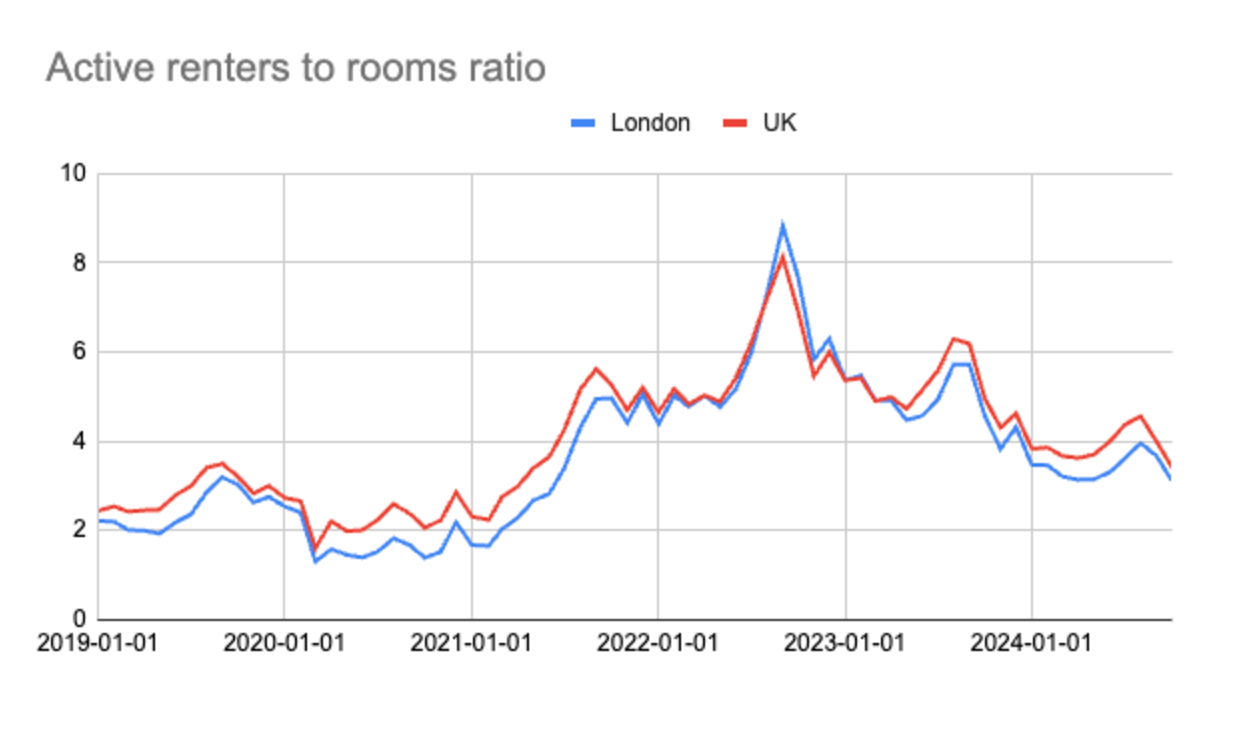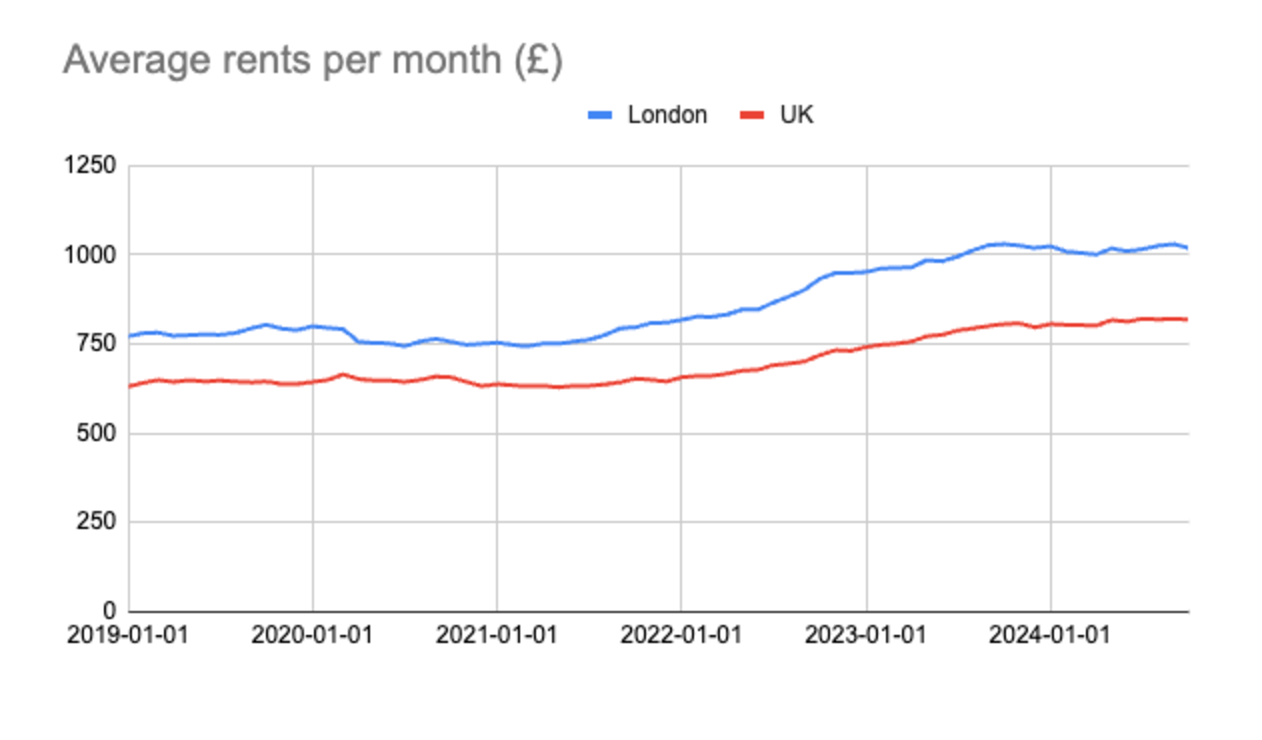
It’s no secret that the past 4 years in the rental market have been all over the place. So we thought we’d try and make some sense of it for you, and summarise what the flatshare market is looking like at the end of 2024 and our predictions for the year ahead.
In 2020 the whole market flipped as people couldn’t move and landlords were desperate to fill empty rooms. After the pandemic, we saw a huge surge in people looking for rooms as pent-up demand re-entered the market.
Here's what the number of rooms on offer looked like:
You can clearly see the spike in 2020, followed by a big drop, then a steady increase.
Here's what things looked like in terms of the number of people looking for rooms:
There's a notable dip at the start of 2020, followed by a huge peak in the autumn of 2022 and another in 2023 before things started to calm this autumn. That spike in 2022 represented a record number of renters at any one time for us.
But what does all of that mean? Is the market 'normal' again?
It's hard to tell. The market has always fluctuated in terms of supply and demand, so what normal (or a 'new normal') should look like is tricky to determine. On top of that, there's been an ongoing slump in the number of rooms available in recent years due to changes in the way landlords are taxed.
One way to determine the supply/demand ratio is to analyse how many enquiries on average a SpareRoom ad gets (which is how a lot of property sites do it). However, it's not necessarily accurate. If there are 50 room ads in an area and 50 people looking for rooms, it appears as if 50 people are competing for every room, when that’s not necessarily true.
What we do at SpareRoom, is look at the number of people looking for rooms and the number of live offered ads, then we divide them to get the ratio of seekers to rooms to get a more realistic statistic.
Here's what that looks like:

For reference - the ratio of renters/rooms in Sept 2022 was 8.1 (UK) and 8.8 (London), and in October this year, it fell to 3.4 (UK) and 3.7 (London).
The data shows that, regardless of the actual number of rooms or renters at any given time, it's the ratio that matters. The real issue in 2022 wasn't how many people were in the market - it was how many people were in the market compared to how many rooms were available.
So, if the ratio is falling, that means rents are coming down, right?
Wrong.

Average rents in every major UK town and city hit record levels this year. This is down to many factors, including that costs have risen (including interest rates and, therefore, mortgage rates) since the Autumn 2022 Liz Truss/Kwasi Kwarteng mini budget.
But in more positive news, as the supply/demand ratio rebalances, it looks like rent increases are at least slowing - which is a good thing for renters.
